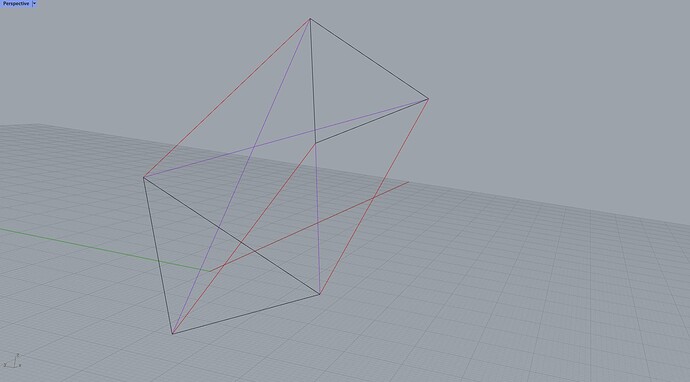Do you suspect that this demonstrates evidence that the simplest method of linking TRPT polygons will be the most effective …
Or would a system with additional bridling still likely improve performance by some metric? (like torsional rigidity / rotational stiffness)
Certainly if we added another bridle (purple) between 2 consecutive triangles (black lines below)… e.g. where there are already straight lines (red lines) between the triangles, adding extra trailing lines (purple lines) to take the torque
The purple lines will make the TRPT system between the 2 triangles more rigid in torsion instantly with very little tension between the triangles.
This extra bridle TRPT will initially be much less dynamic and the system will stay rigid with tension shared between the 2 bridle lines through changes in L/D, gusts and such up to the limit point which is when the torque/tension ratio exceeds that which the purple lines can support
Looking at the shaft from side on we notice though that the purple lines make for a much slimmer shaft than the red lines
Just like if the system was only red lines
Notice the red lines will not be supporting any torque beyond that which the purple lines can.
The red lines only support inline tension.
Must double test this with a model … I think the system collapses quite quickly (certainly for a triangle TRPT polygon) beyond the torque/tension ratio point being exceeded
This form of TRPT undoubtedly offers some advantages and live monitoring of the line tensions would provide a robust solution to TRPT stability.
I suspect there is more drag with the extra lines.

